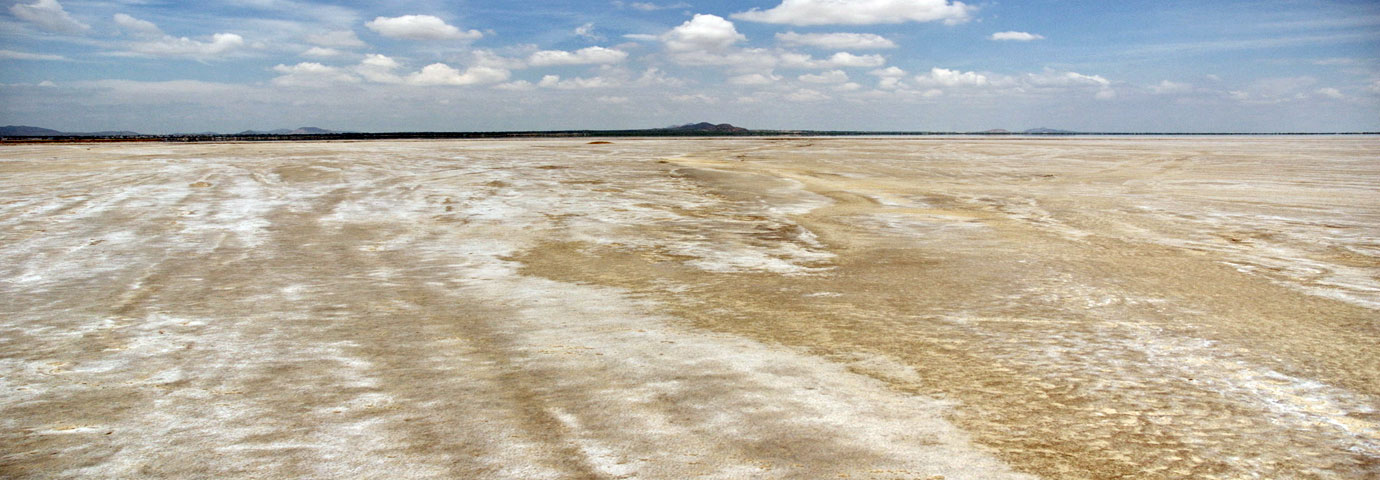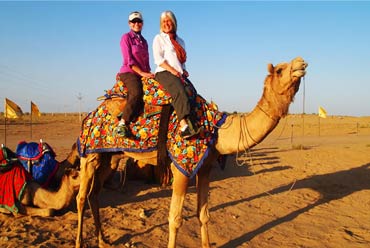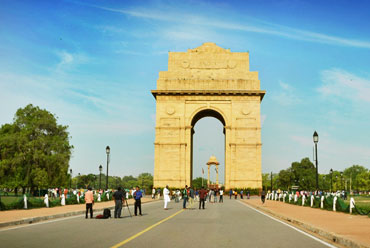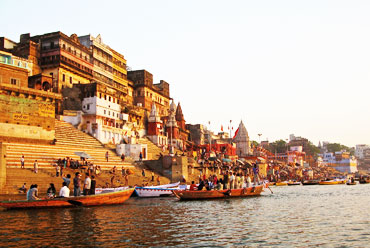Tourists Attractions
Sambhar is India's largest saline lake, 190 sq km in extent at full capacity, and lays some 60 km west of Jaipur, just outside prosaically named Salt Lake City. This vast body of glacial saline is on average just 0.6 cm deep and never more than 3 m even just after the monsoon. It stretches in length for 22.5 km, its width varying between 3 and 11 km. Several seasonal freshwater streams, two of the major ones being the rivers Mendha and Rupangarh, feed it.
The vast, roughly elliptically shaped lake has been divided into two sections by a 5-km long stone dam. The eastern section contains the reservoirs for salt extraction, canals and saltpans. Water from the vast shimmering western section is pumped to the other side via sluice gates when it reaches a degree of salinity considered optimal for salt extraction.
The waters here are glacially still, edged with a glittering frost of salt. Flies abound, drawn by the blue-green algae in the water, and queue up in order to crawl into your mouth and ears. There is a sharp briny tang in the air that takes one straight back to coastal fish markets.
An indigenously developed rail trolley system-the lines were laid by the British-takes one across the dam and to various far-flung points in the salt works.
What really draws one to Sambhar is the lure of flamingos. These tall, dainty birds with their ballerina tutus are attracted here in thousands by the delicious spirulina algae that flourish when the water reaches a medium degree of salinity. After the Rann of Kutch, where they breed, Sambhar is said to be the most important habitat for flamingos in the country. Pelicans too, apparently love the lake and flock here in large battalions.
A vast pale-pink concourse of birds, perhaps 20,000 to 30,000 strong, can be seen shifting and murmuring in the glassy water and dark mud. Occasionally, a large group would fly low over the water and settle at another spot, touching down with the lightest of flouncing.
There are many other species to be appreciated too. Storks, sandpipers, redshanks, black-winged stilts, coots, and shovelers float somnolently in the water.
Actually, Sambhar's ferocious brine is too saline for many species but more birds can be found in the freshwater ponds in the surrounding areas. The Naliasar Pond, just 4 km south of Salt Lake City, is crammed with waterfowl-shovelers, common teals, pintails, common pochards, tufted pochards, gadwalls, graylag and bar-headed geese and even busty shelduck that fly swiftly overhead.






